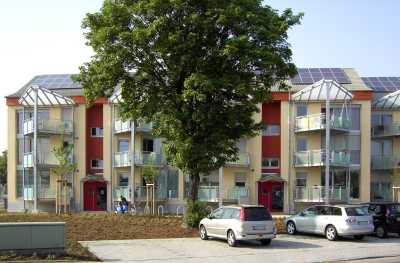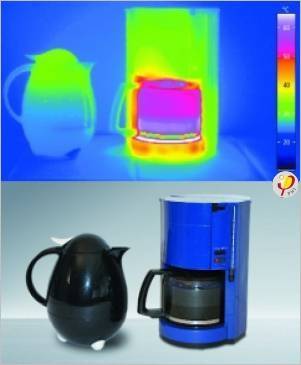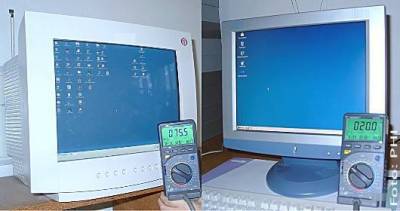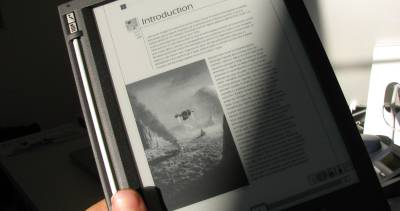Table of Contents
Energy efficiency – the key to future energy supply
…it is possible to reduce the energy demand to near zero without relinquishing comfort.
Energy efficiency does not mean that one has to feel cold all the time. Improved efficiency means that it is possible to provide more comfort while consuming less energy at the same time. It is all about intelligent technology and not about having to forgo comfort.
The potentials for better energy efficiency are much, much bigger than the potentials for energy savings by reduced comfort. With contemporary available solutions, energy efficiency can save some 90% of the consumption - while it will be hard to save 25% by lowering temperature, and so, comfort. This insight is often a surprise but has been demonstrated in practice, it's not a theoretical potential. Again: This is not a typo, the potential savings are in the range of 90%, the remaining energy requirement will be reduced to one tenth of the value it originally has been.
The Passive House is an ideal example for this approach
Measured results have shown that the actual heating consumption values of such houses are about 90% less than the consumption values of ordinary existing buildings in Germany.
 |
| Example of a modernised old building with over 90% savings in heating energy through improved thermal protection (“Passive House Building Stock” Project by GAG Ludwigshafen). |
Today's available possibilities for improving energy efficiency are often underestimated:
- A Passive House window reduces more than 70 % of the heat losses in contrast with existing double pane glazing;
- even subsequent good insulation of an external wall saves almost 90% of the losses of that wall
- and an efficient heat recovery system reduces the ventilation heat losses by 75 to 90 %.
Applying these measures will help to achieve extremely high levels of energy efficiency and extremely low levels of energy consumption, substituting the greatest part of the energy originally used in a building.
There are numerous possibilities for covering the remaining energy demand - even if this energy is provided by conventional energy carriers, the situation is much better as less energy is required in the first place making energy resources last longer and reducing the environmental impact. Sample projects show that it is even possible to meet the energy demand by using renewable energy sources.
High levels of energy efficiency can be achieved in other sectors, too
- With the 1-litre (14 kWh) car, over 75 % of the fuel is saved (without restricting driving comfort – a good electric car has such a high efficiency)
- With an LCD monitor about 70 % of the electricity consumption is saved in comparison with old CRT monitors; LED-monitors are be better again and electronic ink will be even better, there is almost no energy consumption remaining with such a screen from a modern e-book-reader.
- 75 to 90 % of the electricity consumption can be saved by using fluorescent lamps or LED-lights available on the market; the latest developments are es good as 210 lm/W.
Energy efficiency means substituting energy consumption by intelligent, innovative products and clever process management; in short: “brains instead of brawn”.
Achieving high levels of energy efficiency mainly requires a certain additional investment which will pay off in the long term. The required products can be manufactured locally, creating employment and encouraging innovation.
Improving energy efficiency is a universal task. Wherever energy is used to provide a service, efficiency can be improved, often quite considerably. The required measures for this can be carried out together with new acquisitions (such as an energy-saving refrigerator) or with maintenance or modernisation measures (e.g. thermal insulation during the application of new plaster). This is usually very attractive economically. Sometimes it even makes sense to replace old systems immediately: for example, old heat circulation pumps, boilers pre-dating 1982, old lighting systems, insulation of basement ceilings and attic ceilings as well as replacement of old single-paned windows.
The computer sector
Yet, there’s more to come with new methods currently being developed for utilising incident light (so-called electronic paper). The physical limit for the energy consumption of a display is extremely low (…reading a book doesn’t require any energy at all).
The computer sector could do more to improve the energy efficiency of products. The possibility of maintaining the full performance of a PC including the monitor and peripherals while using a continuous output of a mere 5 to 10 watts, has been demonstrated by the “One Laptop Per Child” project.
And that's only one-tenth of the normal electric power of personal computers today. Maximising energy efficiency helps minimise the energy otherwise needed.
We supported this project - it is a contribution to the most important task of the future: the improvement of education worldwide.
Why invest in all these efficiency measures?
There are several reasons:
- All fossil and nuclear energy sources come with a lot of problems: Do you remember the last oil spill? Have you seen the holes in Earths crust created by brown coal surface mining? Do you really think the risks of nuclear energy are inevitable?
- 80% of all energy used in contemporary economy is based on fossil fuels - and this is creating an increased CO2 concentration in the atmosphere and in the oceans. The results are increased temperatures, heavier and more frequent extreme weather conditions - and an rising ocean level.
- Fossil fuel resources are finite - an especially the cheap sources will go early. That results in rising energy prices. Already high in 2004, these are even higher now (2011). It will be expensive to mainly rely on fossil fuels in the future.
- More humans in a growing world want to have their access to the services done using energy. Without a much better energy efficiency this would add to the rising costs of a limited resource.
- Higher efficiency comes with even better comfort. Using energy not efficient will place energy on the wrong place (where it is not needed) and this ends with a kind of problems in each case.
- Better efficiency is tried and tested - it is worth the effort to insulate a building, to install better windows, to use heat recovery ventilators.
- There is only a small additional investment cost to be done - an investment, which is paying back with a quite high internal interest rate. As if it was producing energy (the energy you do not need any longer) to very low costs.
- The value is mainly created by the handcrafts building new construction of doing the refurbishment - and some added value to the products used in the process. All this is to some 80 to 95% regional creation of value, what will help communities recovering.
Is it just about energy? Aren’t other sustainability issues also important?
In recent years, this has been the question most often raised in the discussions after lectures by Passive House experts. Indeed, almost all systems for assessing sustainability focus on completely different aspects – in such assessments, energy often only plays a very small role in comparison with water, building materials, socially sustainable concepts, costs and aesthetics.
This is not about provoking reactions, but it must be said that energy is the most important and decisive factor regarding our civilisation’s progress towards sustainability. When the best scores in building sustainability assessments go to buildings with mediocre energy performance – it only misleads the public.
This can be easily demonstrated:
- If we call to mind the significant events that have occurred in recent years (besides the political wrangling and the virtual intrigues of cunning fraudsters), for example, the incidences of extreme weather events such as destructive tornados, of deaths due to gas pipeline explosions, of rocketing energy prices, oils spills in the Caribbean, nuclear reactor accidents, …
- These events no longer affect “only” the inhabited environment. They govern our everyday life. The rising cost of energy is eating up an increasingly larger proportion of the income of less affluent parts of society in particular. Moreover, the cost of damage caused by supplying conventional energy has to be borne by the taxpayers – a cost that isn’t included in the energy price, let alone the fact that even now, many countries still subsidise such energy paths and thus distort the markets.
- Given our current energy dependence, the availability of energy equates to power and wealth. As a result, power and wealth are also used to influence democratic institutions.
- Vested economic interests have long recognised the fact that energy is a decisive factor for our future; often due to ignorance or short-sightedness, however, they are calling for the very decisions that lead us down the wrong paths. For example, it is not a question of gaining more influence over oil wells in the Middle East by using military force (obviously this strategy has not proven successful). Rather, it is about reducing our dependence on the power-hungry structures of energy giants. This is only possible if energy-related services are provided locally thus contributing to regional value creation – and exactly this is achieved through energy efficiency and renewable energy resources.
- No other economic sector in our civilisation depends so vitally and to such a substantial extent on the energy supply. The warnings of lobbyists are definitely true and it would be a great mistake to ignore these.
- Even the “great minds” with completely different approaches have recognised these interactions. Take, for example, Bill Gates’ monologue, “Bill Gates on energy: Innovating to zero!” This analysis is correct to a great extent (except for the over-emphasis on “zero”, as 15% to 20% is still considered to be “nearly zero” in the case made here – problem solved). However, the “solution” being promoted here goes in the wrong direction, leading to new dependencies instead of freeing people and economies from dependence.
Does this mean that all other issues are less important or even unimportant? Not at all. In reality, our society values other topics greatly: accessibility for the disabled, the separation of waste, the living environment, a socially acceptable distribution of costs, the preservation of our historical monuments. The fact is that we have already fixed very extensive requirements for most of these issues, sometimes even through laws, and these are not in conflict at all with the measures for much more efficient uses of energy. The latter has been almost reprehensibly neglected in the decades since the 1950s; energy consumption has increased five-fold since then. The per capita consumption of non-renewable energy in developed countries today is too high for sustainable global development, by a factor of almost four. Thus, something really has to happen, and that on a large scale.
The good news is that this is possible. The possibilities for increasing energy efficiency by a factor of more than 5 are available to us, and the remaining energy demand can be covered sustainably through regionally available energy sources all over the world. Exemplary demonstration projects in especially committed regions have already proven both this and also that this is possible without neglecting other important objectives.
This is one of the outstanding features of energy efficient solutions: that they represent a comparatively small intrusion, both objectively and economically. Passive House refurbishments taking into account requirements for the preservation of historical monuments and also for construction with regard to accessibility for the disabled have already been carried out.
Architects, designers and craftsmen need to pay attention to this issue, which is why educational opportunities with this focus are increasingly being offered. After all, it is these professions that will benefit from this development – their expertise is required.
See also
Efficiency vs. Efficiency Factor
Electric Energy Efficiency for Households – Doing the whole step towards energy efficiency
Literature
[Feist 2002] Feist, Wolfgang: Mit dem Passivhaus in eine nachhaltige Zukunft. In: 6. Internationale Passivhaustagung, Tagungsband. Basel, Darmstadt 2002, New edition with footnotes from 2010 available here in German: Passivhaus - nachhaltige Zukunft
[Feist 2001] Feist, Wolfgang: Energieeffizienz (Energy Efficiency). Heidelberg, 2001 PDF (in German)


